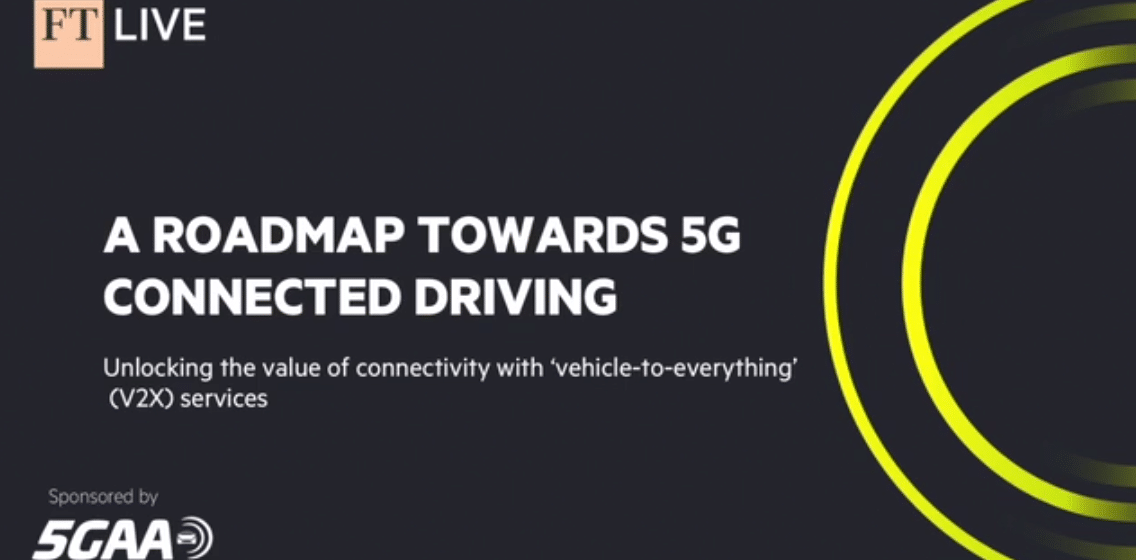
Cooperation Models enabling deployment and use of 5G infrastructures for CAM in Europe
This White Paper outlines five non-mutually exclusive options for ecosystem cooperation models relevant to 5G CAM (Connected and Automated Mobility) infrastructure deployment and use. 5GAA believes these options may bring even more benefits when combined. Building upon this first assessment, 5GAA considers that in the context of the large-scale introduction of advanced safety and automated driving use cases supported by C-V2X, a more integrated model involving all parties (vehicle manufacturers, road operators, communication service providers i.e. mobile network operators and neutral host infrastructure providers) should be considered as well as other services providers who will play an increasing role in the ecosystem e.g., location-based data marketplace, Mobility as a Service (MaaS), etc.

MEC for Automotive in Multi-Operator Scenarios
Edge Computing is an important topic in Vehicle-to-Everything (V2X) use cases, as many such cases ultimately require guarantees of low latency and high reliability. The use cases involve a large amount of regional data which needs to be processed and dispatched locally instead of being uploaded over the internet to its cloud services which, at scale, becomes time- and cost-intensive without generating much-added value. The present document includes architecture and deployment models in the event that Edge Computing is used for these V2X use cases and also describes how interoperability and service continuity can be solved.
Read the full technical report

5G Automotive Association Presents Latest Developments on C-V2X in China to Boost Automated Driving Revolution
Together with relevant ecosystem actors in China – from Government officials to telecom and automaker companies and the association’s community – the 5G Automotive Association (5GAA) has presented the latest developments on Cellular Vehicle-to-Everything applications and services at GSMA’s Mobile World Congress Shanghai 2021.

System Architecture and Solution Development; High-Accuracy Positioning for C-V2X
The present document aims to study the requirements of positioning, build understanding of the positioning system framework, and offer the corresponding technologies according to the requirements and environments, as well as some demonstrations in High-Accuracy Positioning for Vehicle-to-Everything (V2XHAP) services.
With the evolution of V2X services from assisted driving to automated driving, the use case requirements are also changing in terms of the availability of network coverage, level of uncertainty, availability of features for simultaneous localisation and mapping (SLAM)-based positioning techniques, reliability, latency, speed, data rate, communication range, as well as positioning accuracy, which is changing from metre level to sub-metre level. Different from other services, positioning information is one of the essentials to guarantee the safety of Internet of Vehicles (IoV). Some important KPIs for positioning have been described in 3GPP, such as positioning accuracy, latency, update rate, power consumption, etc. Furthermore, there are some specific needs in terms of V2X service scenarios, such as continuity, reliability, and security/privacy, etc. All positioning KPIs for V2X mentioned above need to be clarified, especially positioning accuracy which is the most basic requirement in V2X service. In some use cases, such as automated driving, remote driving and platooning, centimetre-level positioning with stable performance provides the necessary accuracy and safety assurance.
Read the full Technical Report

C-V2X Use Cases and Service Level Requirements Volume II
Following the first volume (Volume I) set of Use Case descriptions (previously named as ‘WAVE 1’) and the corresponding framework developed in WG1, this document presents the second volume of Use Case descriptions (previously named as ‘WAVE 2’). One of the goals with this second set is to describe advanced Use Cases that have challenging requirements for future communication systems, such as 5G – as reflected in the report title.
The Use Case descriptions are written from the vehicle perspective and strive to be solution agnostic and applicable to both driven and autonomous vehicles. The realisation of Use Cases does not preclude applications performing various tasks supporting the Use Cases, such as collecting information, analysing etc.
Read the full report

Reducing EU Transport Emissions: Can C-V2X Deployment play a Significant Role?
On 24 November 2020, the 5G Automotive Association, in partnership with Euractiv, hosted a debate to discuss how C-V2X can contribute to reducing transport emissions.
To what extent can connected driving, with increasing levels of automation, lead to environmental benefits? To answer this question, 5GAA asked Dutch non-profit organisation TNO to conduct a study into the environmental effects of V2X communication as it is currently used in transport and as it can be used in future implementations.
During the event, the organisation presented the results of the study. These highlighted the specific C-V2X functionalities that offer the biggest emission reductions and therefore a contribution to the EU’s climate goals.
Indeed, at the time of the broadcast, the European Commission was working the Sustainable and Smart Mobility strategy, proposing measures that match the ambition of the recently updated emissions reductions goals. Policymakers aimed to leverage digitalisation and automation to create a more sustainable future for the transport and mobility sector.
Watch the video below to have some highlights of the event.

Roadmap to 5G Connected Driving – Financial Times Digital Dialogue sponsored by 5GAA
On 20 October 2020, the 5G Automotive Association took part in one of the Financial Times Digital Dialogues moderated by Michael Pooler, Manufacturing Editor at Financial Times.
A successful and insightful session focused on the “Roadmap towards 5G Connected Driving”.
Oliver Bahns, Senior Vice-President Connected Mobility Deutsche Telecom AG, T-Systems, Digital Solutions; Kelei Shen, CTO Harman; and Stephan Durach, Senior Vice President, Connected Company Development, Technical Operations, BMW Group, highlighted the most critical issues around V2X Services.
Some of the topics covered were:
- What are the most prevalent and common features of connectivity currently available in the field of vehicles-to-everything?
- Why is the automotive sector such an attractive prospect for 5G? Why does full connectivity of cars with everything require 5G as opposed to 4G?
- What are the most exciting emerging technological advances in 5G and V2X?
- What are the technological obstacles and how are they being overcome?
Rewatch the full session below.
Roadmap to 5G Connected Driving – Financial Times Digital Dialogue sponsored by 5GAA
On 20 October 2020, the 5G Automotive Association took part in one of the Financial Times Digital Dialogues moderated by Michael Pooler, Manufacturing Editor at Financial Times.
A successful and insightful session focused on the “Roadmap towards 5G Connected Driving”.
Oliver Bahns, Senior Vice-President Connected Mobility Deutsche Telecom AG, T-Systems, Digital Solutions; Kelei Shen, CTO Harman; and Stephan Durach, Senior Vice President, Connected Company Development, Technical Operations, BMW Group, highlighted the most critical issues around V2X Services.
Some of the topics covered were:
- What are the most prevalent and common features of connectivity currently available in the field of vehicles-to-everything?
- Why is the automotive sector such an attractive prospect for 5G? Why does full connectivity of cars with everything require 5G as opposed to 4G?
- What are the most exciting emerging technological advances in 5G and V2X?
- What are the technological obstacles and how are they being overcome?
Rewatch the full session below.

Business Aspects and Requirements of 5G Network slicing (BARNS) Report
5G will help vertical industries to achieve the ‘internet of everything’ vision of ubiquitously connected, highly reliable, ultra-low latency services for a massive number of terminals. Network slicing is considered as one of the key features for 5G allowing in particular to support the different needs of various vertical industries, including the automotive industry. Network slicing is a concept for running multiple logical networks (which could be customised and provided with guaranteed Service Level Agreements, SLAs) as virtually independent business operations on common physical infrastructure.
To limit the scope of this work, it will initially focus on the very basic functions of a mobile network, which are to provide coverage, throughput, and latency for data transmission between the vehicle (UE) and a backend infrastructure (i.e. mobile networks) using the network slicing approach. In further steps, the scope of this work shall be extended from how to use network slicing to tackle the additional functional and operational requirements from the automotive industry and their business implications.
Read the full report

Privacy by Design Aspects of C-V2X
Connected vehicles, as part of the emerging Cooperative Intelligent Transportation Systems (C-ITS) are positioned to transform the future of mobility – a change enabled by the exchange of messages between vehicles and between vehicles and transport infrastructure. As these messages are constantly broadcasting data, including vehicle speed and location, this raises potential concern about how to address privacy and data protection.
In this document, we take a fresh look at the latest technological architectures that feature Privacy by Design. We focus specifically on Cooperative Awareness Messages (CAM) and Decentralised Environmental Notification Messages (DENM), where privacy protection is offered by using pseudonym certificates that do not contain any identifying information. A Public Key Infrastructure (PKI) system takes care of the provision and overall management of the corresponding cryptographic keys. In this document, we review how current PKI system design can help address the risk of tracking from outside and inside attackers, and we identify challenges and privacy risks that remain unresolved. We give some suggestions in terms of future research and conclude the document with general recommendations.


